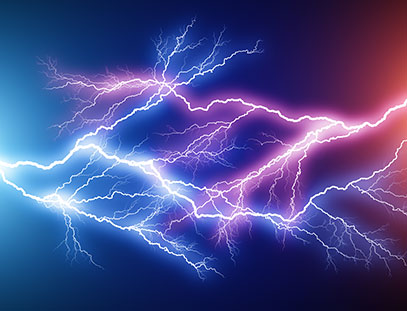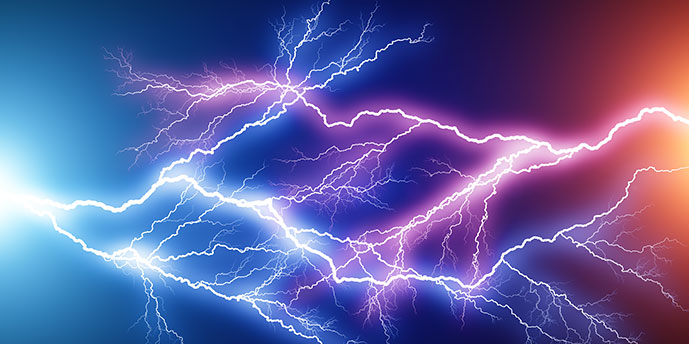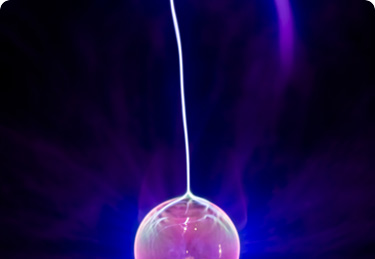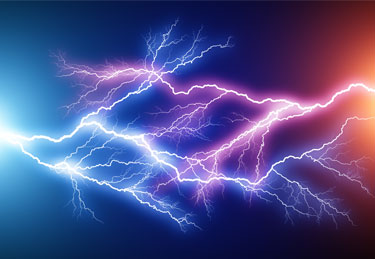Search
How is Static Electricity Generated in My Facility?

Static electricity is the charge that is generated whenever any two contacting surfaces move relative to each other. For example, static electricity is generated during many common processing operations, such as when liquids flow relative to pipe walls or when powder particles contact the surfaces of processing and conveying equipment or when you walk on an insulating flooring.
Is charge generation hazardous?
Generation of electrostatic charge will only be hazardous if the generated charge is allowed to accumulate. In an industrial setting, charge can for example, accumulate on electrically isolated metal equipment, on insulating objects such as plastic containers and bags, on insulating powders and non-conductive liquids, and on personnel wearing shoes with insulating soles or standing on insulating flooring. An electrostatic discharge occurs when a sufficiently charged body approaches a grounded point. There will be a flash fire or explosion if the discharge occurs in the presence of a flammable atmosphere with a minimum ignition energy (MIE) smaller than the effective energy of the discharge.
It is well known that flammable gases and liquids, and explosible powders are commonly used in many processing operations, and some of these materials could be ignited by electrostatic discharges leading to fires and explosions.

Are all electrostatic discharges the same?
The simple answer is no! As was mentioned earlier, electrostatic discharges occur between two objects or surfaces that are at different electrostatic potentials (voltages). Effective discharge energy depends very much on the amount of charge accumulated (potential difference) and on the electrical properties of the surfaces/objects involved.
Generally speaking, in most situations the maximum energy of discharges (sparks) from conductors (metals) can be significantly higher than those from personnel which in turn can be greater than those from the surfaces of bulk powders and from plant and equipment made of insulating (plastic) materials. There are of course overlaps and exceptions to this simple hierarchy of maximums.
In summary, the risk of igniting a flammable atmosphere with a discharge of static electricity depends both on the effective energy of the electrostatic discharge and on the sensitivity to ignition of the flammable atmosphere. The ignition sensitivity is a (measurable) property of the flammable atmosphere. The effective energy of electrostatic discharges found in a process environment is variable but fall within ranges and are usually limited.
What are the steps for assessing electrostatic hazards?
A systematic assessment of electrostatic ignition hazards normally involves:
- Determining the magnitude and polarity of the charges that are generated;
- Investigating the ability of the processing equipment and materials to retain and accumulate the static charge;
- Determining the type and effective energy of the discharges that could result from electrostatic charge generation and accumulation; and
- Determining the sensitivity of the flammable atmosphere to ignition by the resulting discharges (Minimum Ignition Energy)
If the energy of the electrostatic discharge is greater than the Minimum Ignition Energy of the flammable atmosphere, a fire or explosion hazard will exist, and measures should be taken to avoid the conditions under which such discharge could occur. If the exclusion or elimination of electrostatic ignition sources is not practical, other measures such as avoidance of flammable atmospheres or explosion protection must be considered.
Why choose Stonehouse for your electrostatic hazard assessment needs?
We are a team of like-minded process safety specialists with a passion for what we do – making the industry safer. We partner with our clients in the process industries to help them identify, assess, prevent, and control fire, explosion, and accidental loss of containment hazards in their operations. Our services include expert consulting, laboratory testing, and training in the specialist fields of dust explosion & fire hazards, electrostatic hazards & processing problems, gas & vapor flammability hazards, Process Hazard Analysis, Process Safety Management, and incident investigation.
For more detailed information on this topic and how we can help you ensure the safety of your personnel, facility, and the community from dust fire and explosion hazards please contact us.

Get in touch
To learn more about our expertise and services in dust explosion prevention & mitigation, call us at +1 609 455 0001 or email us at [email protected] today.
We also offer tailored virtual and in-company process safety training programs on Dust Explosions, Static Electricity and HAC (Hazardous Area Classification) and more. Find further information here.









